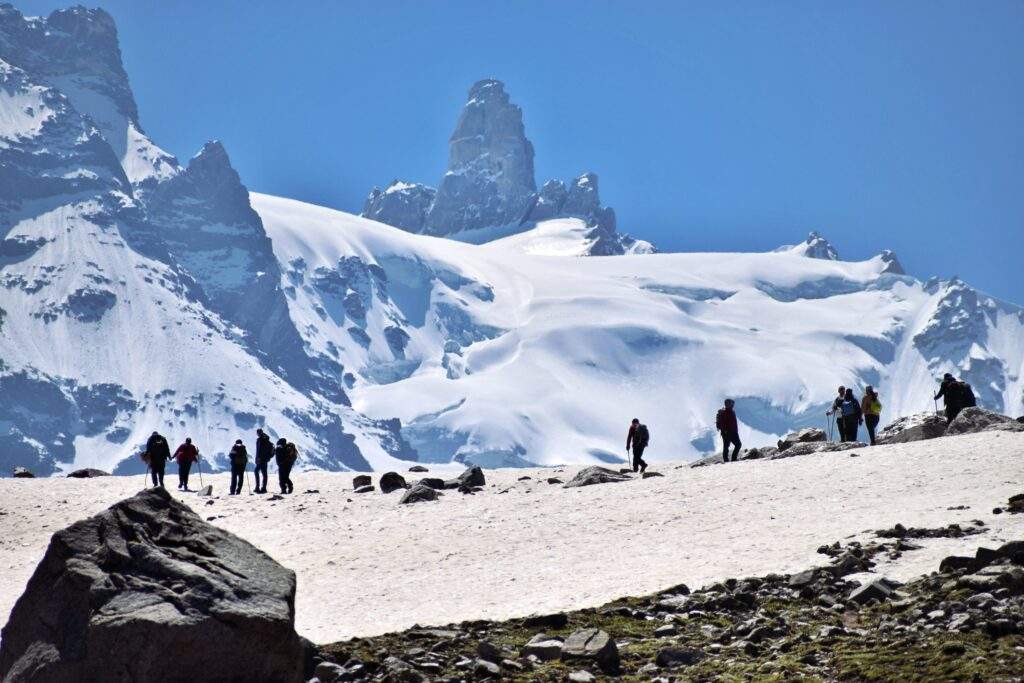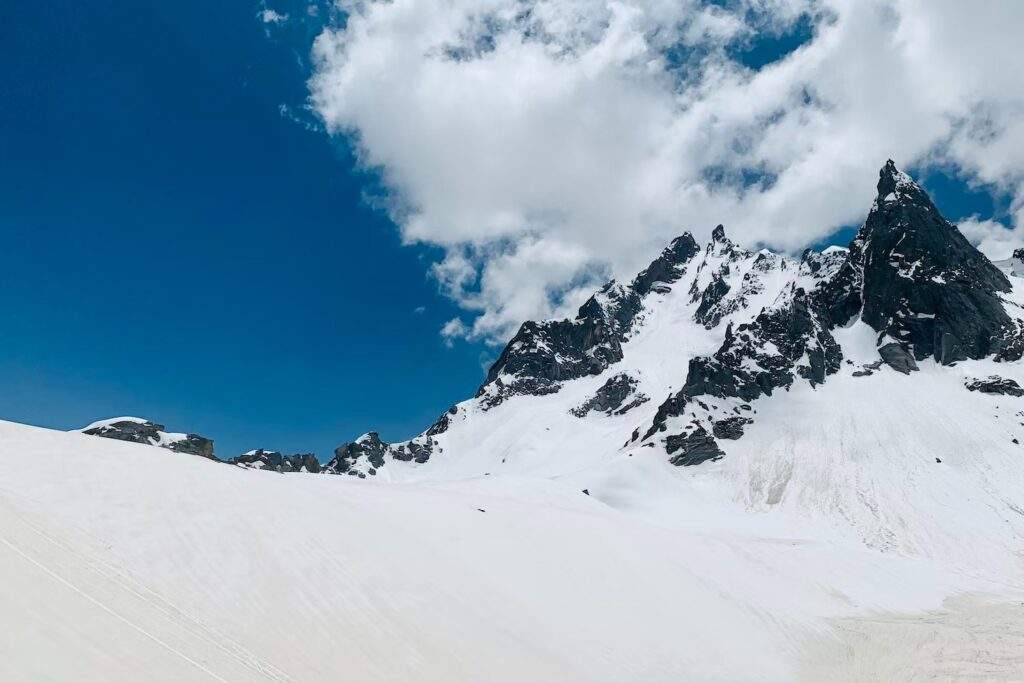
Unveiling the Majesty: A Guide to Conquering Hampta Pass Trekking Adventure

Introduction to Hampta Pass Trekking
The allure of Hampta Pass beckons adventure seekers from around the globe. This trek, situated in the Pir Panjal range, promises an immersive experience in nature’s lap. The journey begins with an introduction to the sheer beauty and challenges that define Hampta Pass.
Preparation for the Hampta Pass Trekking
Before embarking on this adventure, physical fitness and meticulous preparation are paramount. From acclimatization exercises to packing the essential gear, every detail matters in ensuring a safe and enjoyable trekking experience. Trekking at high altitudes demands a higher level of fitness, including cardiovascular endurance and strength. Potential trekkers should engage in regular exercise routines, including cardio and strength training, in the months leading up to the trek.
Creating a checklist of essential gear is crucial for a successful trek. The checklist should include appropriate clothing for varying weather conditions, sturdy trekking boots, a reliable backpack, a sleeping bag suitable for sub-zero temperatures, and essential personal items. Trekkers must also carry a well-equipped medical kit, including altitude sickness medication, to ensure preparedness for any unforeseen circumstances.
Choosing the Right Time
Seasonal variations play a crucial role in the trek’s difficulty and overall experience. Understanding the ideal months for the Hampta Pass Trekking is essential for adventurers seeking the perfect blend of challenge and beauty. The trek is generally accessible from June to September when the weather is relatively stable. During this period, the region boasts pleasant temperatures, clear skies, and breathtaking views of snow-capped peaks. Avoiding the monsoon season is advisable to prevent difficulties caused by heavy rainfall and slippery trails.
If you’re looking for a company to conquer the Hampta Pass trekking, I highly recommend The Searching Souls. Their experienced guides and personalized approach ensure an unforgettable adventure. Discover the thrill of Hampta Pass with confidence!
Navigating the Terrain
The Hampta Pass trail, with its diverse landscapes, presents both challenges and rewards. From the lush greenery of the Kullu Valley to the barren landscapes of Lahaul, trekkers need to be prepared for a journey that tests their endurance and navigation skills. The trail includes river crossings, rocky terrain, and steep ascents, requiring a combination of physical stamina and mental resilience.
Trekkers should be equipped with proper navigation tools, such as maps and compasses, and possess basic orienteering skills. Additionally, trekking poles can provide stability and support during challenging descents. This section of the trek demands careful planning and a step-by-step approach to ensure a safe and enjoyable experience.
Flora and Fauna Encounter

One of the unique aspects of the Hampta Pass Trekking is the opportunity to witness a rich biodiversity. Trekkers can marvel at the diverse flora and fauna that inhabit the region while also learning about responsible trekking practices to preserve the delicate ecosystem. The trail is home to a variety of alpine flowers, including vibrant rhododendrons and orchids, creating a picturesque landscape. Wildlife enthusiasts may encounter Himalayan birds, ibex, and marmots along the route.
Responsible trekking involves minimizing one’s environmental impact by adhering to Leave No Trace principles. Trekkers should stay on designated trails, avoid disturbing wildlife, and dispose of waste properly. Engaging with local conservation efforts can further contribute to the preservation of the natural beauty surrounding Hampta Pass.
Cultural Delights of the Region
Beyond the natural wonders, the trek provides a chance to interact with local communities. Trekkers can immerse themselves in the unique cultures of the region, gaining insights into the traditions and lifestyles of the people along the trail. The villages of Hampta and Sethan offer a glimpse into the local way of life, characterized by agriculture, traditional crafts, and a deep connection with the mountains.
Engaging in cultural exchanges with the locals adds a meaningful dimension to the trekking experience. Trekkers can participate in local festivities, taste traditional cuisines, and learn about the challenges and joys of life in the high Himalayas. Respecting the cultural norms and practices of the communities encountered fosters positive relationships and enriches the overall trekking adventure.
Campsite Wonders
Camping is an integral part of the Hampta Pass trek, offering trekkers a chance to rest and rejuvenate surrounded by nature’s beauty. This section provides an overview of key camping sites and tips for a comfortable night under the stars. The campsites along the route are strategically located to provide stunning views of the surrounding landscapes.
Setting up camp requires attention to detail, from choosing a level surface to ensuring adequate protection from the elements. Trekkers should be equipped with quality camping gear, including a durable tent, a warm sleeping bag, and a reliable camping stove. Adhering to Leave No Trace principles when camping helps preserve the pristine environment for future generations of trekkers.
Photography Opportunities at Hampta Pass Trekking
For shutterbugs seeking to capture the essence of the trek, Hampta Pass Trekking offers a myriad of photo-worthy moments. From snow-capped peaks to river crossings, this section provides tips for photographers to make the most of their journey. Carrying a reliable camera with extra batteries and memory cards is essential for capturing the stunning landscapes and diverse wildlife.
The golden hours of sunrise and sunset present ideal lighting conditions for photography. Trekkers should seize the opportunity to photograph the changing hues of the mountains and the play of light on the landscape. Including human elements in photographs, such as fellow trekkers or local inhabitants, adds a sense of scale and narrative to the visual story of the trek.
Dealing with Altitude
As trekkers ascend to higher altitudes, understanding and managing altitude sickness become crucial. This section offers insights into the effects of high altitudes and practical tips for a safe and enjoyable trek. Altitude sickness can affect anyone, regardless of their level of fitness, and being aware of its symptoms is essential for early detection and intervention.
Gradual acclimatization is key to preventing altitude-related issues. Trekkers should plan their itinerary to allow for gradual increases in altitude and incorporate rest days for acclimatization. Staying well-hydrated, maintaining a steady pace, and avoiding alcohol and tobacco contribute to altitude adaptation. Carrying medication prescribed for altitude sickness, such as acetazolamide, is a precautionary measure for trekkers venturing into high-altitude regions.
Stories and Legends
The Hampta Pass Trekking is steeped in folklore and stories of mythical significance. Trekkers can enrich their experience by learning about the legends associated with the region and hearing anecdotes from seasoned adventurers. The locals often share tales of deities, spirits, and legendary figures believed to inhabit the mountains, adding a mystical element to the trek.
Experienced trekkers may have their own stories to tell, recounting challenges overcome and moments of awe experienced along the trail. These narratives contribute to the sense of camaraderie among trekkers, creating a shared bond through the challenges and triumphs of the Hampta Pass adventure. This section invites trekkers to immerse themselves in the rich tapestry of stories woven into the fabric of the Himalayas.
Culinary Adventures on the Trail
The trek not only offers a feast for the eyes but also for the taste buds. Trekkers can indulge in local cuisines and delicacies, experiencing a culinary adventure amidst the breathtaking landscapes. Local dishes prepared by the villagers and trekking guides provide a taste of the region’s cultural richness.
Typical Himalayan fare includes hearty meals with staples like rice, lentils, and locally grown vegetables. Trekkers can savor traditional dishes such as thukpa, momos, and sidu, gaining a deeper appreciation for the culinary traditions of the region. Maintaining a balanced diet during the trek is essential for sustaining energy levels and optimizing performance on the trail.
Team Building and Group Dynamics
Trekking is not just an individual endeavor; it’s a collective journey. This section emphasizes the importance of teamwork and provides strategies for fostering a cohesive and supportive trekking group. Group dynamics play a significant role in the overall trekking experience, influencing morale, motivation, and the ability to overcome challenges.
Effective communication within the group is crucial for coordinating movements, sharing information, and providing mutual support. Trekkers should be prepared to assist each other during difficult sections of the trail, fostering a sense of camaraderie and shared achievement. Engaging in team-building activities before the trek, such as group hikes or training sessions, can strengthen the bonds among group members, enhancing the overall trekking experience.
Weather Surprises
The Himalayas are known for their unpredictable weather patterns. Trekkers need to be prepared for sudden changes in weather, and this section offers insights into how to navigate through weather surprises. The region experiences rapid weather fluctuations, including sudden rain showers, snowfall, and temperature drops.
Trekkers should pack versatile clothing that can adapt to varying weather conditions. Waterproof and windproof layers are essential to protect against rain and chilly winds. Keeping a close eye on weather forecasts before and during the trek allows trekkers to make informed decisions and adjust their plans accordingly. Flexibility and preparedness for unexpected weather events contribute to a safe and enjoyable trekking experience.
Post-Trek Recovery
Completing the Hampta Pass Trekking is a significant achievement, and proper recovery is essential. This section provides tips for post-trek recovery, ensuring trekkers can celebrate their triumph and cherish the memories. Post-trek recovery involves both physical and mental aspects, allowing the body and mind to recuperate from the demands of the journey.
Engaging in gentle stretching and relaxation exercises can alleviate muscle soreness and stiffness. Adequate rest and sleep are crucial for the body to recover and recharge. Reflecting on the personal achievements and memorable moments of the trek contributes to a positive mental state. Celebrating the completion of the trek with fellow adventurers, whether around a campfire or in a local village, adds a sense of accomplishment and camaraderie.
Conclusion
In conclusion, the Hampta Pass Trekking is a majestic adventure that promises not only a physical challenge but a spiritual journey. From the diverse landscapes to the cultural wonders, every step is an opportunity to uncover the beauty of the Himalayas. Aspiring trekkers are encouraged to embark on this transformative journey, armed with knowledge, preparation, and a spirit of exploration.
FAQs
- Is prior trekking experience necessary for Hampta Pass?
- While prior experience is beneficial, beginners with good fitness levels can undertake the trek with proper preparation.
- What is the best time to undertake the Hampta Pass trek?
- The ideal time is from June to September when the weather is relatively stable.
- Are there medical facilities along the trekking route?
- Basic medical facilities are available at some campsites, but trekkers should carry a personal medical kit.
- Can solo trekkers join organized groups for Hampta Pass?
- Yes, many trekking agencies organize group treks, allowing solo trekkers to join a community of like-minded adventurers.
- What level of fitness is required for Hampta Pass trek?
- A good level of cardiovascular fitness and stamina is essential. Regular exercise and cardio training are recommended before the trek.